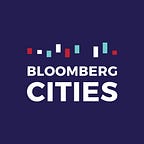Top 10 LocalGov innovation stories of 2018
Any way you slice it, 2018 has been an incredible year for public-sector innovation — from the increasingly diverse group of people leading the movement in city halls to their awe-inspiring efforts to tackle the most pressing challenges their cities are facing. Here are the 10 most-read Bloomberg Cities stories of the year.
Number 10
What’s ahead for What Works Cities?
On May 23, Mike Bloomberg announced an additional $42 million investment in the What Works Cities program to enhance cities’ use of evidence and data to improve resident outcomes and address the most pressing local issues. With news of the new investment, which Bloomberg said was, in part, a response to a mounting disdain for facts in Washington, Bloomberg Cities spoke with What Works Cities Executive Director Simone Brody about the success of WWC’s first three years and what’s in store for the years ahead. READ MORE
Number 9
Mid-sized cities test new approaches to reducing traffic
More than half of U.S. mayors regularly hear complaints about traffic congestion from residents, according to Bloomberg Philanthropies’ recent American Mayors Survey. And that may be why some of today’s most interesting ideas for fixing transportation problems are coming not from big cities on the coasts, but smaller ones in the Heartland. Bloomberg Cities checked in on some of those cutting-edge ideas, including those in Lincoln, Neb., South Bend, Ind., Boulder, Colo., and Durham, N.C. READ MORE
Number 8
Meet the new force shaking up city halls: designers
If you’ve never worked with a designer before — and that’s most people in local government — you may be confused about what they do. Are they artists? Do they make plans for buildings? Indoor spaces? Outdoor spaces? Websites? Consumer goods? These are increasingly frequent — and relevant — questions in city halls across the U.S. and around the world, as more cities hire designers to shake up the way local government works with citizens to solve problems. Bloomberg Cities spoke with four designers to learn more about how they work. READ MORE
Number 7
4 strategies that are defining the future of city communications
It wasn’t so long ago that a cutting-edge city hall communications team could brag that it sent out its press releases by fax. Fast forward 30 years, and the city communications landscape has changed so much it would be unrecognizable to someone who left a decade ago. Bloomberg Philanthropies brought together 54 communications leaders from city halls around the world, and four strategies emerged that seemed to reflect where the field is heading. READ MORE
Number 6
9 cities win the U.S. Mayors Challenge
After a yearlong competition that infused more than $17 million into 300 cities through idea accelerator workshops, coaching, a testing phase, and awards, Bloomberg Philanthropies announced nine winners of the U.S. Mayors Challenge — and described what made their ideas stand out from all the others. READ MORE
Number 5
All eyes on the Heartland
Whether it’s drone-based pizza delivery in San Francisco or cutting-edge cancer advancements in Boston, innovation-related news often focuses on what’s happening in our country’s biggest cities — places with lots of investment, the most people, and an undeniable abundance of bright ideas. Yet, as Bloomberg Philanthropies’ James Anderson writes, when we focus only on the big-city breakthroughs, we risk missing out on one of the best stories around: that so much of our country’s most promising and hopeful innovation is coming from the smaller cities and towns of the Heartland. READ MORE
Number 4
7 Millennial mayors to watch
The Millennial generation has made its mark on technology, entertainment, and many other industries in the United States. But this generation is only just starting to make substantial inroads into local government at the highest level. Bloomberg Cities introduced readers to seven mayors to watch from this first wave of ambitious young leaders. READ MORE
Number 3
10 women mayors to watch
Throughout the year, people predicted that 2018 would be the “Year of the Woman.” But the wave had already started to build in America’s city halls: 26 of the 100 largest U.S. cities have women as mayors — up from 20 at the start of this year. That’s a greater proportion of women running cities than you’ll currently find in the U.S. Senate (23 percent) or the U.S. House (19 percent), and way more than are running Fortune 500 companies. In October, Bloomberg Cities introduced readers to 10 of these mayors. READ MORE
Number 2
Data-driven women
One of the biggest misconceptions about the field of data science is that it’s all about the numbers. But, as anybody in the business will attest, statistics and spreadsheets don’t mean a whole lot if you don’t also understand the people, the problems, and the promise they represent. That’s why the diversity of life experiences teams bring to the table is so important. What Works Cities’ Simone Brody and GovEx’s Beth Blauer introduced readers to six women who are helping position the field of data science to think more critically about the biggest challenges facing cities. READ MORE
Number 1
How Helsinki uses a board game to promote public participation
When mayors talk about “citizen engagement,” two things usually seem clear: It’s a good thing and we need more of it. But defining exactly what citizen engagement means — and how city workers should do it — can be a lot harder than it sounds. To make the concept real, the city of Helsinki has come up with a board game that small teams of managers and front-line staff can play together. As they do so, they learn about dozens of methods for involving citizens in their work, from public meetings to focus groups to participatory budgeting. It’s called the “Participation Game,” and over the past year, more than 2,000 Helsinki employees from all city departments have played it close to 250 times. READ MORE
